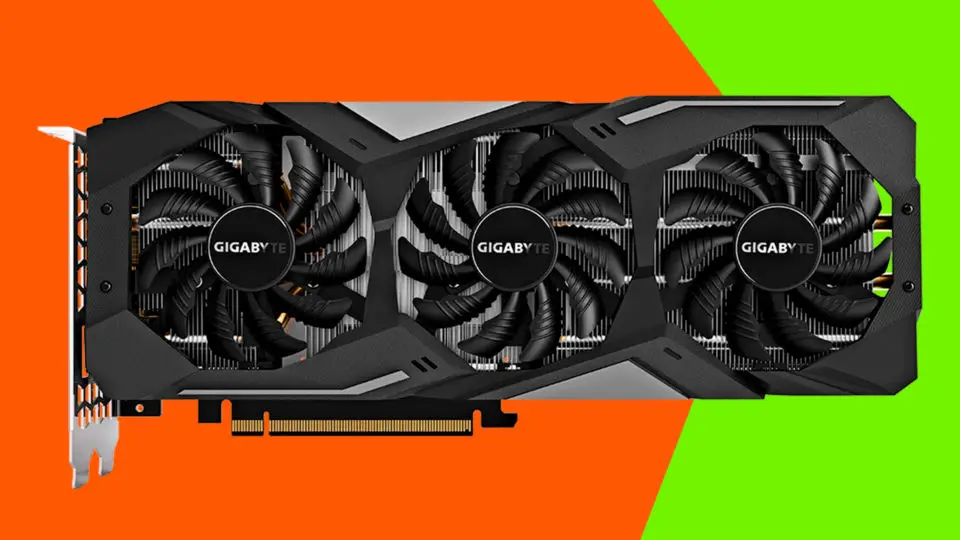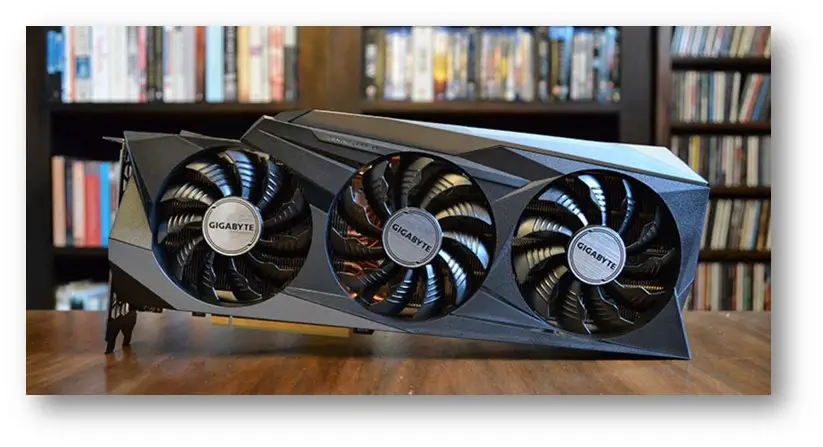When it comes to buying a graphics card, the options can be overwhelming. One factor that can add to the confusion is whether to choose an overclocked (OC) or non-overclocked (non-OC) GPU.
In this article, we will delve into the differences between the two, discuss the advantages and disadvantages of each, and ultimately determine which one is better suited for different use cases.

- What does OC mean on a graphics card?
- OC vs Non-OC Graphics Cards Comparison
- Form Factor
- Memory Clock Speed
- Cooler
- Components Quality
- Performance
- Models & Features
- Overclocking Potential
- Power Consumption
- Price
- Are OC graphics cards better?
- Which GPU is better OC or non OC?
- Are OC GPU better for mining?
- What are the disadvantages of OC GPU?
What does OC mean on a graphics card?
Overclocking refers to the process of increasing a computer component’s clock rate beyond its factory settings to improve its performance. Graphics cards, or GPUs, are no exception.
When a GPU is overclocked, its clock speed is increased above the base clock frequency set by the manufacturer.
In other words, an OC graphics card runs at a faster clock speed than a non-OC graphics card.
This increase in clock speed results in better performance, particularly in demanding tasks such as gaming or video rendering.
OC vs Non-OC Graphics Cards Comparison
When comparing overclocked (OC) and non-overclocked (non-OC) graphics cards, there are several factors to consider. In this section, we will compare the two types of GPUs based on their size/form factor, GPU/memory clock speed, cooler (fan/heatsink), components quality, performance, models and features, overclocking potential, power consumption, and price.

| OC Graphics Cards | Non-OC Graphics Cards | |
|---|---|---|
| Size/Form Factor | Similar to non-OC GPUs | Similar to OC GPUs |
| GPU/Memory Clock Speed | Higher clock speed | Lower clock speed |
| Cooler | Varies in quality and type | Varies in quality and type |
| Components Quality | Higher quality components | Lower quality components |
| Performance | Better performance | Lesser performance |
| Models and Features | Varies by manufacturer | Varies by manufacturer |
| Overclocking Potential | Higher potential | Lower potential |
| Power Consumption | Higher power consumption | Lower power consumption |
| Price | Higher price | Lower price |
Form Factor
OC and non-OC graphics cards come in various sizes and form factors, from small form factor (SFF) to full-sized GPUs. The size of the card depends on the manufacturer and the specific model. However, in general, both types of graphics cards come in a similar range of sizes and form factors.
Memory Clock Speed
As previously mentioned, the primary difference between OC and non-OC graphics cards is the GPU/memory clock speed. An OC graphics card has a higher clock speed than a non-OC graphics card, resulting in better performance.
Cooler
The cooler on a graphics card is essential for preventing overheating and maintaining optimal performance. Both OC and non-OC graphics cards come with coolers, but the quality and type of cooler can vary. Some cards have a simple fan-based cooling system, while others use a more advanced heatsink design.
Components Quality
The quality of components used in a graphics card can affect its performance and lifespan. In general, OC graphics cards tend to use higher-quality components than non-OC graphics cards due to the increased stress on the components from overclocking.
Performance
When it comes to performance, an OC graphics card typically outperforms a non-OC graphics card. However, the degree of performance improvement varies depending on the specific model and manufacturer.
Models & Features
Both OC and non-OC graphics cards come in various models and feature sets, depending on the manufacturer. Some models may offer more advanced features, such as RGB lighting or enhanced cooling systems.
Overclocking Potential
While both types of graphics cards can be overclocked, an OC graphics card has a higher overclocking potential due to its higher clock speed. However, the degree of overclocking potential varies depending on the specific model and manufacturer.
Power Consumption
An OC graphics card typically consumes more power than a non-OC graphics card due to its higher clock speed. This increased power consumption can lead to higher electricity costs and may require a more robust power supply.
Price
The price of an OC graphics card is typically higher than that of a non-OC graphics card due to the increased manufacturing complexity and higher-quality components used in the card.
Are OC graphics cards better?

The answer to this question depends on what you intend to use the graphics card for.
If you’re a gamer who wants the best possible performance, an OC graphics card is undoubtedly the better option.
However, if you’re on a budget or using your GPU for less demanding tasks such as browsing the web or watching videos, a non-OC graphics card will suffice.
It’s worth noting that an OC graphics card may have a shorter lifespan than a non-OC graphics card due to the increased stress on its components.
However, the difference in longevity is negligible if you take proper care of your hardware.
advantages and disadvantages of using an OC graphics card:
| Advantages of OC Graphics Cards | Disadvantages of OC Graphics Cards | |
|---|---|---|
| Performance | Higher clock speed results in better performance | Increased heat output can reduce performance |
| Overclocking potential | Higher potential for further overclocking | May void the warranty or damage the card if not done properly |
| Quality components | Components are typically of higher quality | Higher-quality components may increase the cost of the card |
| Flexibility | Allows for customization of performance settings | May require additional cooling or power supply upgrades |
| Price | Higher price | May not be worth the additional cost for some users |
Again, keep in mind that the specifics may vary depending on the manufacturer and model of the graphics card.
Which GPU is better OC or non OC?
As previously mentioned, an OC GPU is better for demanding tasks such as gaming or video rendering.
An OC graphics card can deliver better performance by running at higher clock speeds, resulting in smoother gameplay and faster rendering times.
However, a non-OC GPU may be the better option for those on a tight budget or using their GPU for less demanding tasks.
A non-OC graphics card can still provide adequate performance for everyday tasks while being less expensive than an OC graphics card.
Are OC GPU better for mining?
When it comes to cryptocurrency mining, an OC graphics card can offer better performance than a non-OC graphics card.
This is because mining requires a lot of computational power, and an OC GPU can deliver that power more efficiently than a non-OC GPU.
However, there are some disadvantages to using an OC graphics card for mining.
First, an OC GPU consumes more power, resulting in higher electricity costs.
Additionally, an OC GPU generates more heat than a non-OC GPU, requiring more robust cooling solutions to prevent overheating.
What are the disadvantages of OC GPU?
While an OC graphics card can provide better performance than a non-OC graphics card, there are some disadvantages to consider.
The most significant disadvantage is that an OC GPU is more expensive than a non-OC GPU.
This is because the manufacturing process for an OC GPU is more complex and time-consuming than for a non-OC GPU.
Additionally, an OC GPU consumes more power and generates more heat than a non-OC GPU, which can lead to higher electricity costs and more significant cooling requirements.
Lastly, an OC GPU may have a shorter lifespan than a non-OC GPU due to the increased stress on its components.